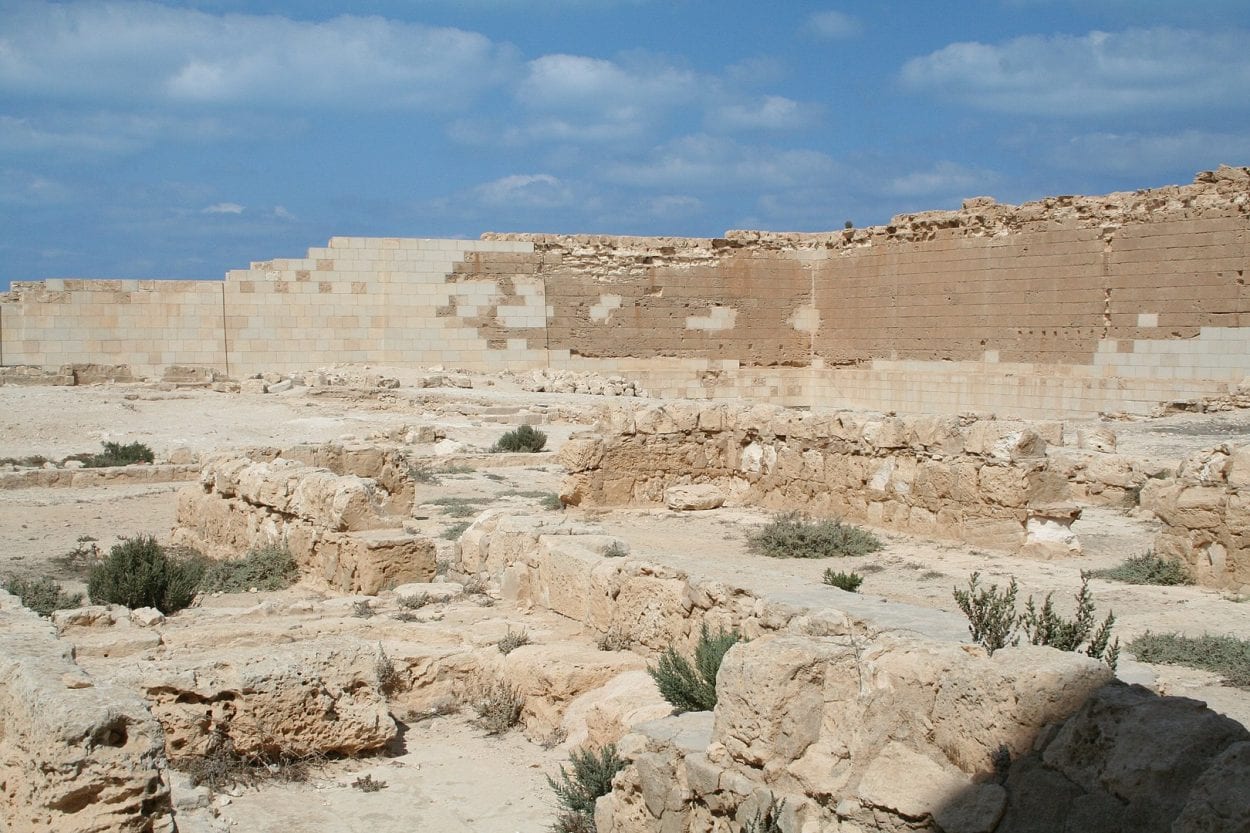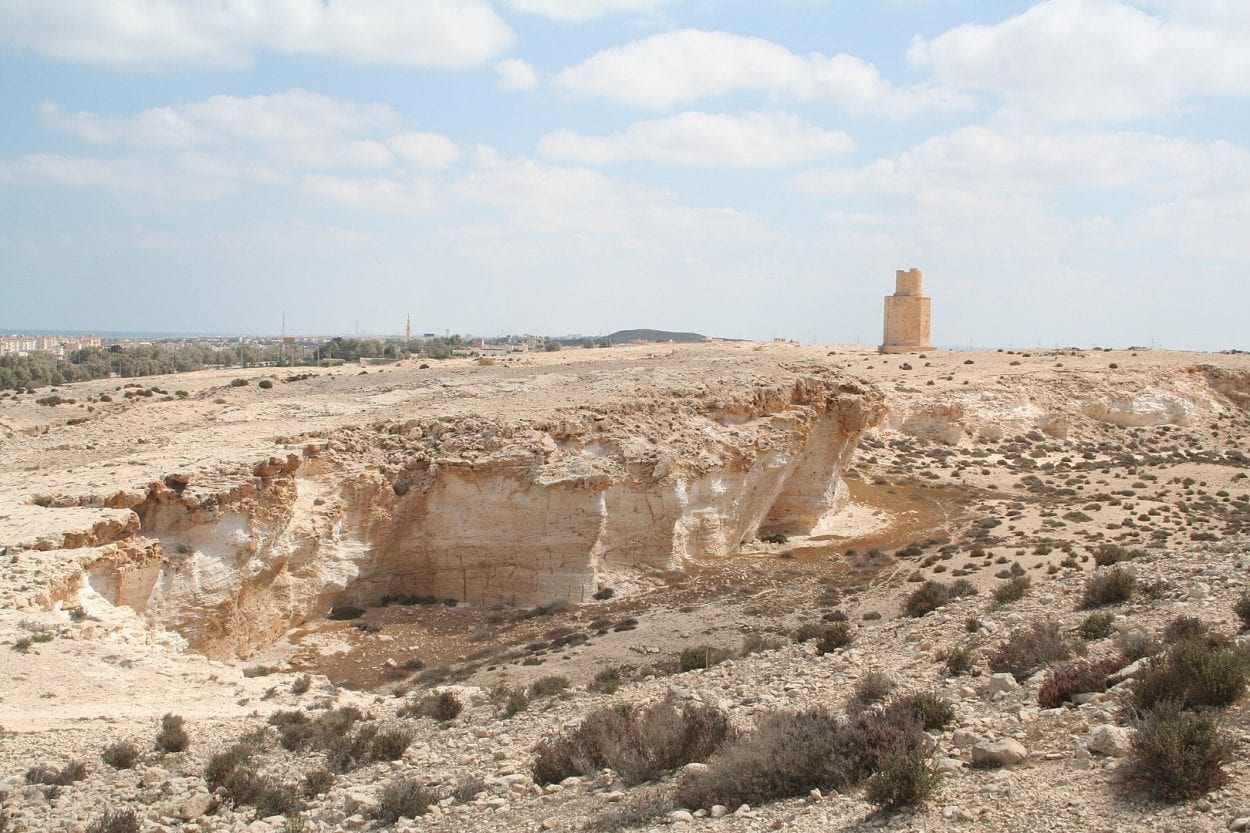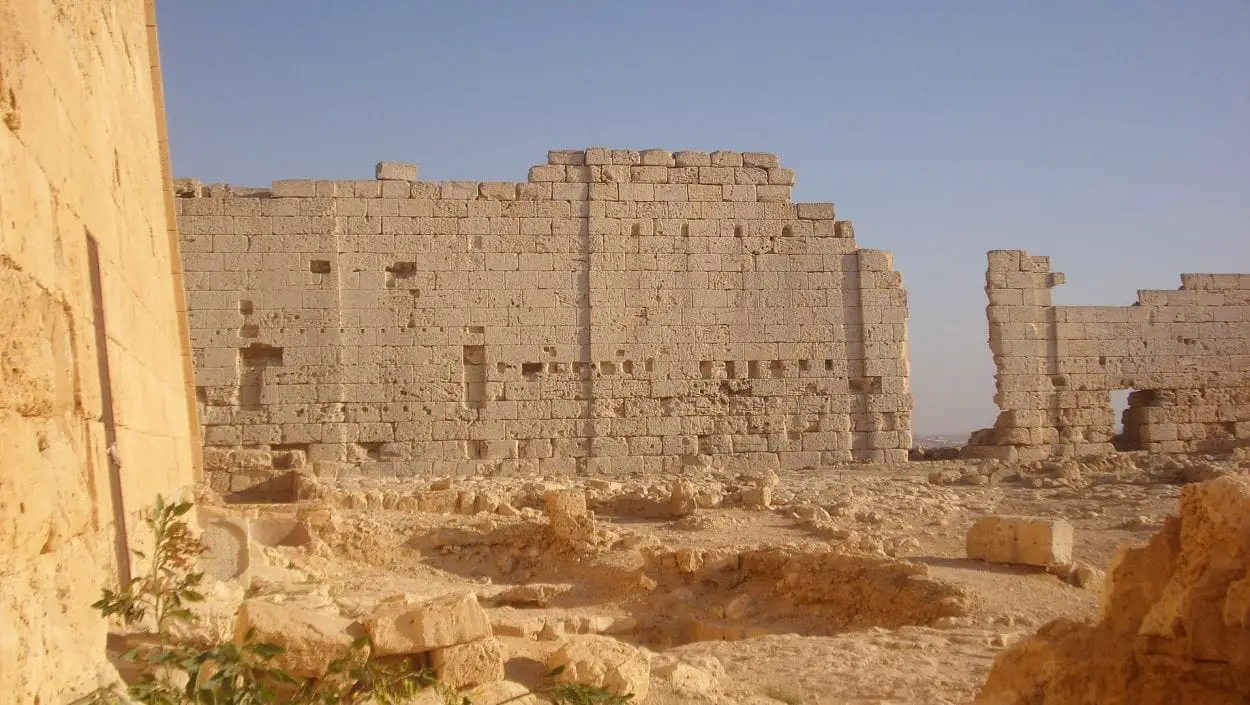Taposiris Magna, meaning “”great tomb of Osiris”, is an ancient town founded by the Pharaoh Ptolemy II Philadelphus in the present-day Alexandria Governorate of Egypt.
Ptolemy II constructed Taposiris Magna between 280 and 270 BC during the Hellenistic period, on the navigable arm of the now dried-out bed of the ancient Lake Mareotis.
The town served as a hub until the seventh century AD for handling products transported across the lake, as well as receiving goods from overland trading routes before shipping them to Alexandria, as well as a religious centre for celebrating the festival of Khoiak (the fourth month of the Season of Akhet when the Nile floods historically covered the land).

Taposiris Magna was planned with a square shaped enclosure centred on the Temple of Osiris, which some academics speculate to be the final resting place of Cleopatra. Surrounding the town is a long wall that extends southwards from an artificial ridge to the southern shore to ensure caravans passed through the town and paid a levy.
Nearby are several private and public buildings, along with shops, cisterns and a necropolis, and a large tower called the Pharos of Abusir, which is a 1:4 or 1:5 replica of the Pharos lighthouse of Alexandria that served as a funerary monument.
By the Roman Period, Taposiris Magna functioned as a customs station to process levies on products from the Mareotic region and the Cyrenaica eastern coast of Libya as they were transported to the Nile Delta or Alexandria.

The Romans excavated a 50-metre-wide channel and a closed harbour system, and two de-silting openings to allow water to flush away the silt and sediments that might accumulate in the harbour basin.
Excavations on the town have discovered the original gate to the Temple of Osiris, and several foundation stones that lined the entrance, one of which suggests that there was once an avenue of sphinxes similar to those of the pharaonic era.
Archaeologists have also discovered numerous Greco-Roman style mummies in a necropolis buried with their faces turned towards the temple, supporting the theory that a royal burial was once placed within the temple walls.
Header Image Credit : Koantao – CC BY-SA 3.0





